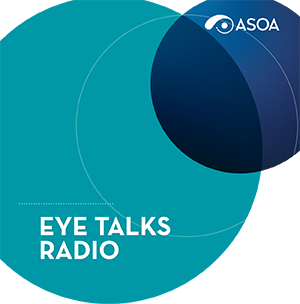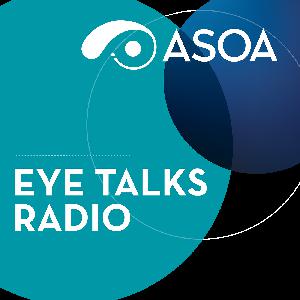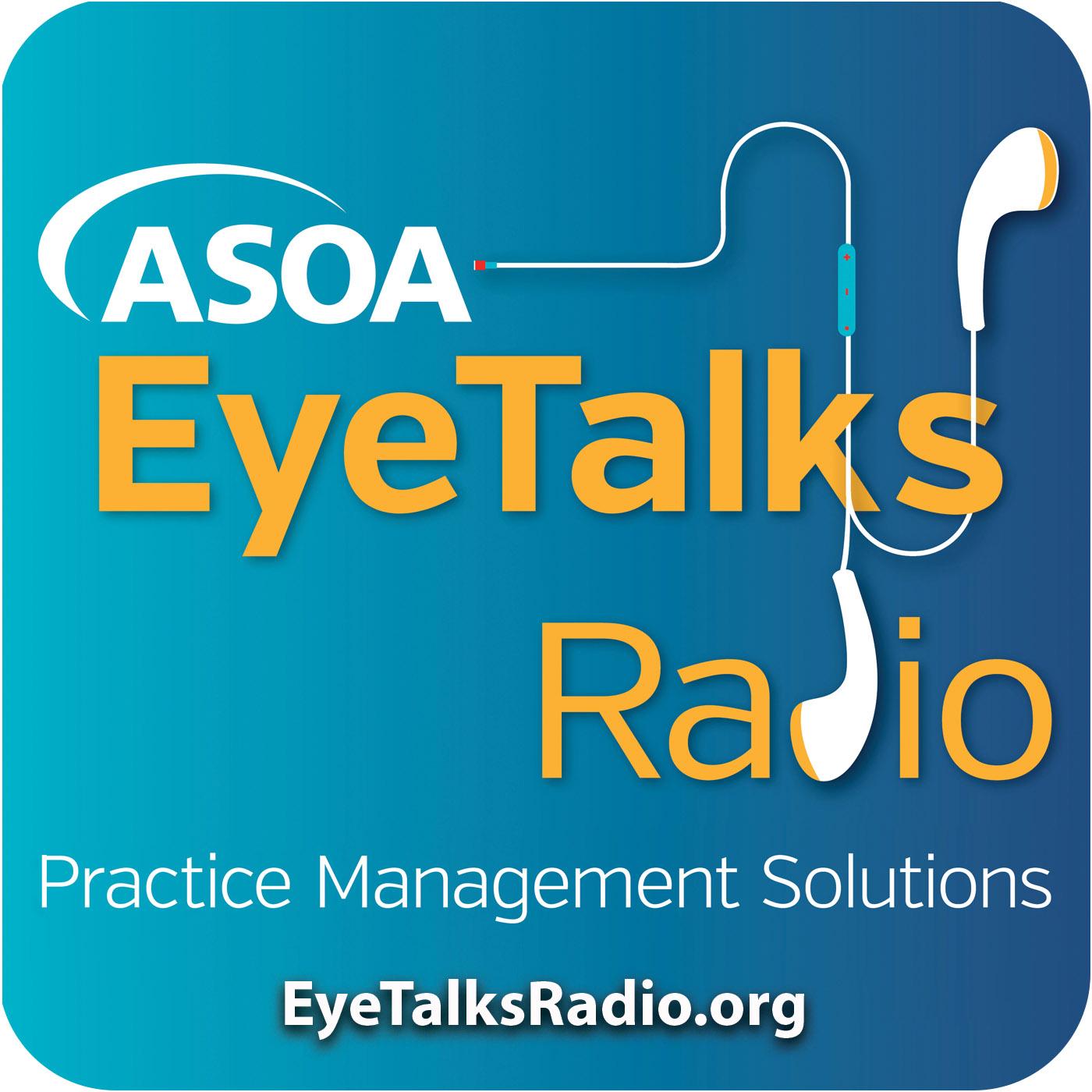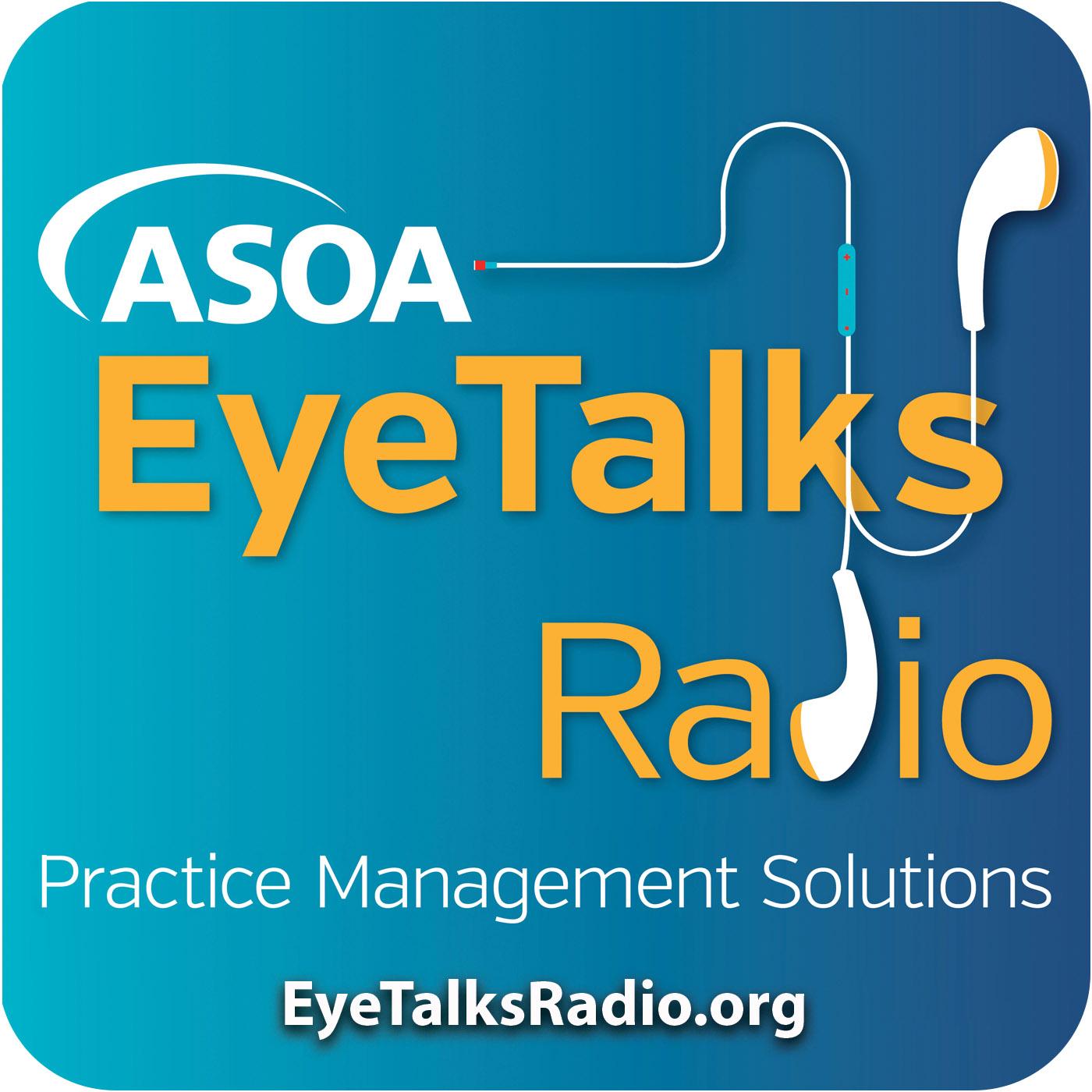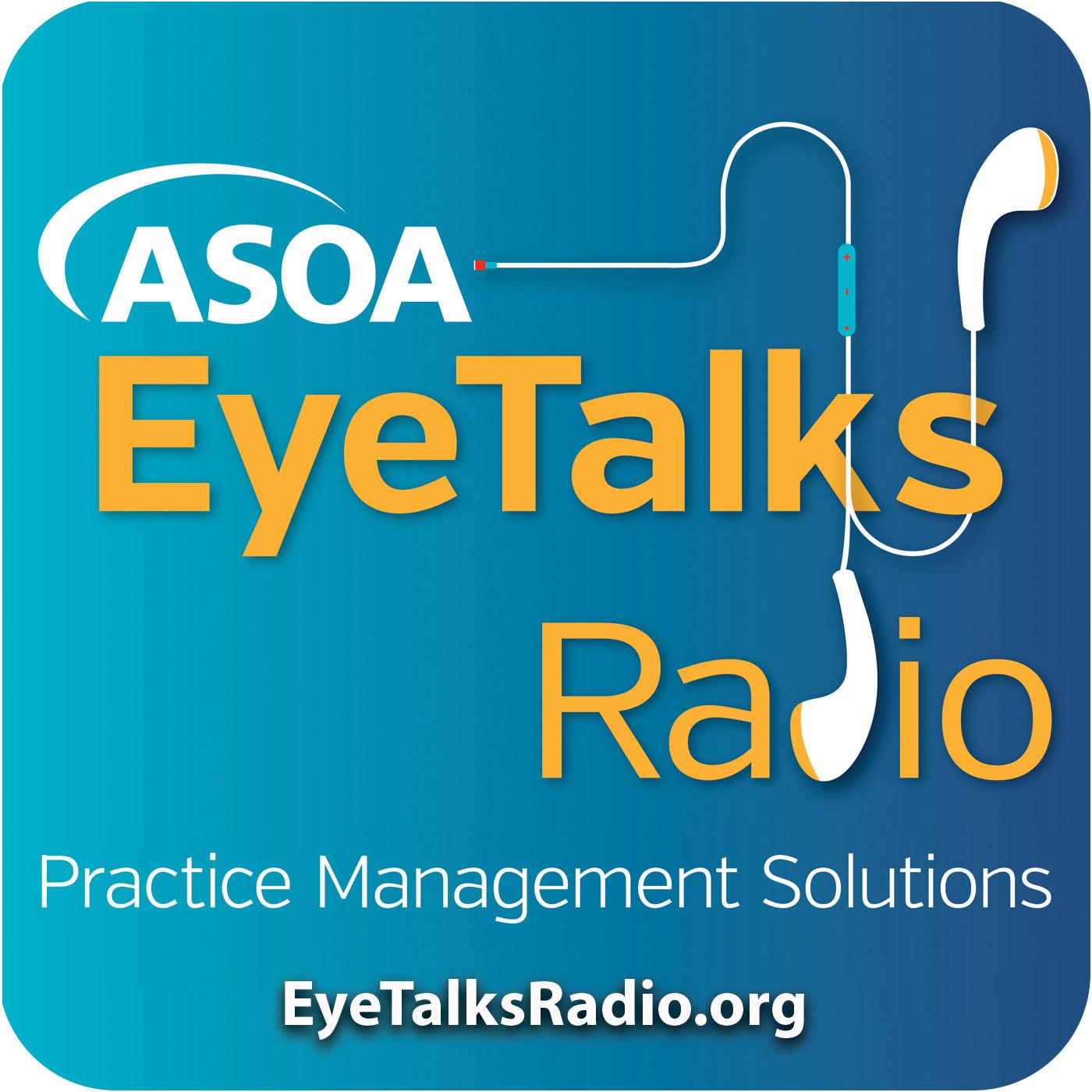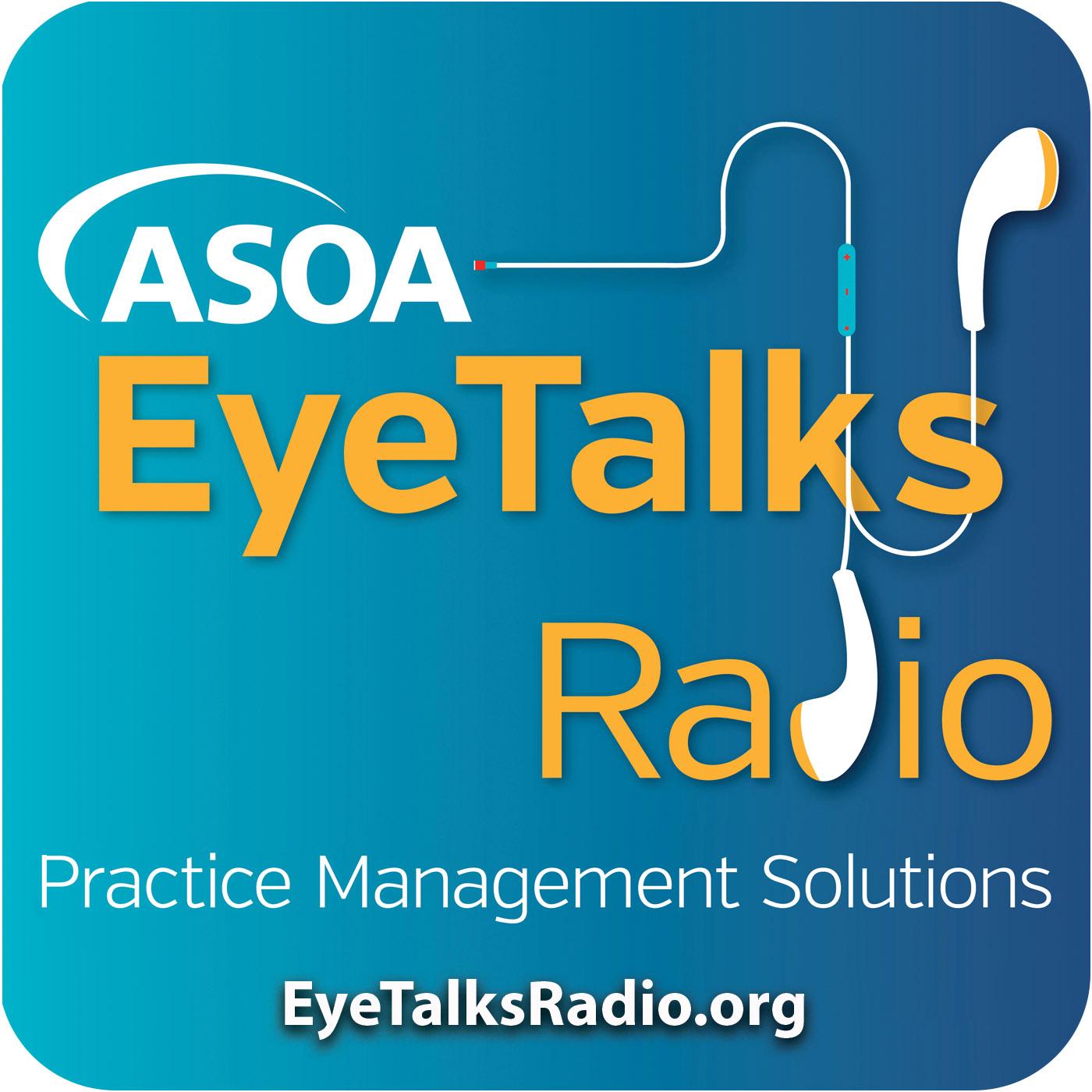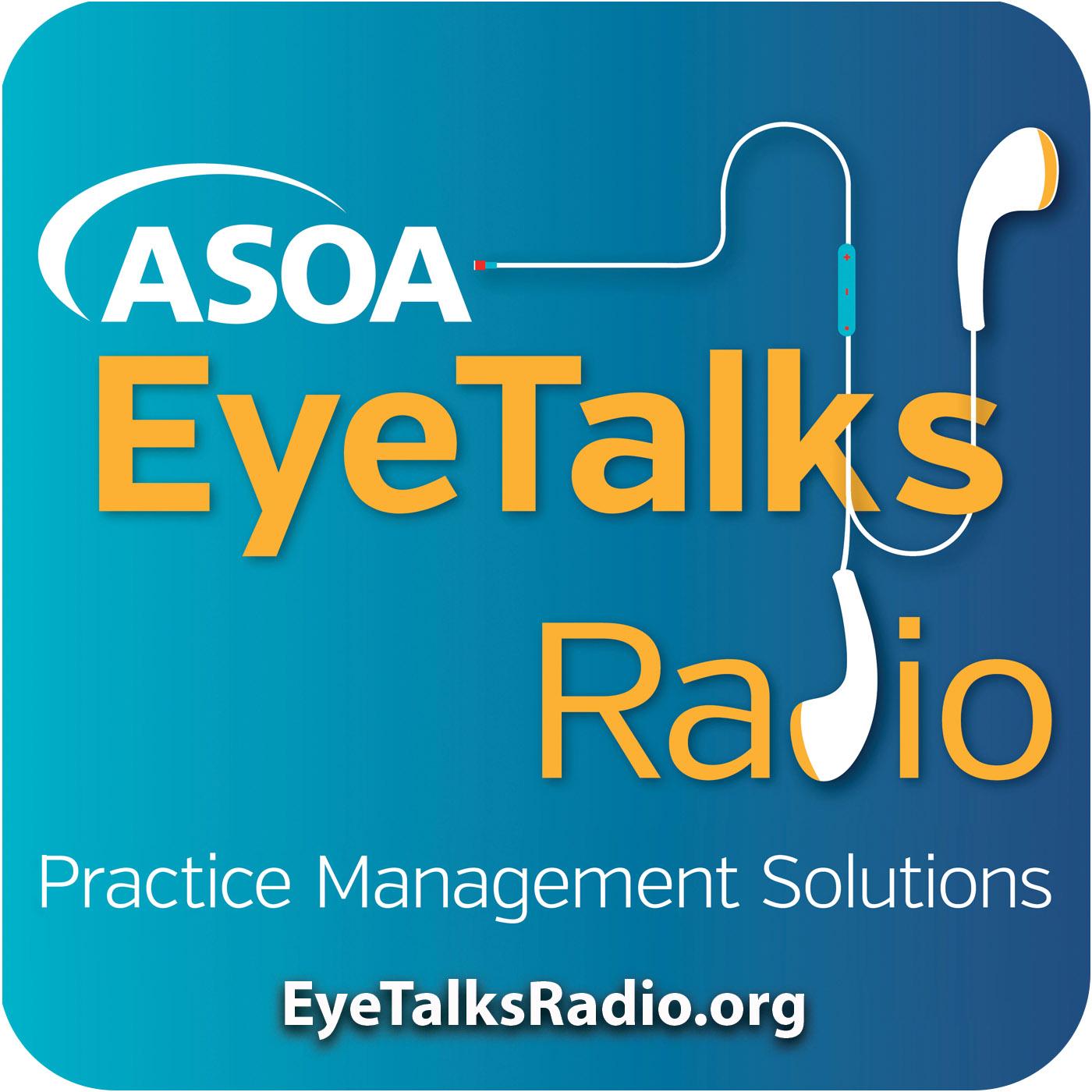Discover ASOA EyeTalks Radio
ASOA EyeTalks Radio

ASOA EyeTalks Radio
Author: ASOA
Subscribed: 38Played: 378Subscribe
Share
Description
EyeTalks Radio delivers strategies and techniques for success in the field of ophthalmic practice management through rich content and periodic interviews with subject matter experts on topics of interest to those who run the business side of ophthalmology including: human resources, practice development and benchmarking, government and regulatory compliance, productivity, and more.
89 Episodes
Reverse
Exploring ideas to enhance optical operations in an ophthalmology practice, such as discussing the different characteristics of opticals vs. medical practices, suggestions for key performance indicators and how to set sales prices, glasses capture rate, and more.
The “Feedback Is a Gift” mantra’s fresh perspective can take time and effort to develop, particularly for those who have historically avoided potential conflict. Not only did feedback need to be rebranded as a word; we also needed to rebuild trust, understanding, and credibility. This episode of EyeTalks Radio is being sponsored by Care Credit.
We all want to provide our patients with the best possible outcomes. While this starts in assume a more active role, which translates to an increased sense of power. When you give the power back to the patient, it helps us all achieve the goal of 20/happy.
Members of the National Board for the Certification of Ophthalmic Executives (NBCOE), Carole Dumas and Ashlie Barefoot Malone, provide tips on how to become a Certified Ophthalmic Executive. This elite certification promotes excellence and professionalism in ophthalmic practice management.
The next breakthrough solution will not come from doing “business as usual.” Imagine the impact you can make from injecting fresh thinking that energizes your patients, colleagues, and your overall organization. Take this opportunity to follow these steps to intrapreneurship and you can dramatically improve your organization—and your future.
A patient is the most important visitor on the business premises. Patients are doing us a favor by giving us the opportunity to serve them. If staff are trained in these areas, the overall patient experience will start to get a huge upswing in positivity.
Choosing the right mix of lenses to feature in your dispensary—and the best way to market them—presents an interesting challenge. Offering too many options to your patients will not benefit them or you.
We all have the ability to make a difficult journey just a little easier. After all, isn’t that why we are in this business? Take a listen to Ellen Adams' 2019 APEX Award-winning Administrative Eyecare magazine article.
Despite varying opinions regarding personal technology in the workplace, one thing remains true: It is a force to be reckoned with and is here to stay.
Tips and strategies for coming to consensus and getting things done when differences of opinion arise.
Take a listen to the latest episode of ASOA EyeTalks Radio -- Q&A Interview: Operation Sight -- as we talk with ASOA Board members Hayley Boling, Debbie Davis, and Carrie Jacobs about their participation and experiences with the Operation Sight program.
Creating a harmonious working environment at your ophthalmic practice is certainly achievable, but what happens when you encounter a member of staff or a physician with whom you clash, or with whom everyone clashes? In this episode, Hayley Boling of Boling Vision & INSIGHT Surgery Center interviews Craig Piso of Piso & Associates to discuss strategies that will help when issues with staff arise.
Having a formal recruitment strategy in place will give you a better chance of finding a suitable candidate who meets your needs.
Laura Baldwin, Principal and Senior Consultant of BSM Consulting, interviews Regina Boore, Senior VP and Executive Consultant of Progressive Surgical Solutions, a division of BSM Consulting, on setting and achieving quality measures for ASCs.
Pity the woodpecker. Its full-time job is banging its head against a tree just to get a single bug if it’s lucky, only to have to go to another tree and bang its head again to get another one. Many leaders and staff feel like the woodpecker when it comes to meetings—they often don’t produce much in the way of results and the process is painful. It doesn’t have to be that way. Here is some advice that might work to help make your meetings less painful and more productive.
Critical thinking is so important to our doctors and patients, in fact, we should foster a culture that encourages it to ensure the best medical care and results. This podcast discusses key ideas related to critical thinking and raises some questions that will prompt you to start incorporating it into your technician training.
A successive development strategy for your potential managers will require dedicated time, a logical assessment of resources, a realistic action plan, and patience. Under your leadership, a rational plan for the internal development of practice managers can relieve some of your burdens, retain valuable staff, and provide optimal value for the practice.
In the evolution of customer service, the right step might be a step backward in time. Even in our eyecare practices, the basic principles of customer service remain the same as the corner ice cream shop. Understand your product and service, be able to articulate each one, and identify and meet the needs of the customer with good-natured professionalism.
The CPT definitions and descriptions of the ophthalmic codes (92002– to 92014) are confusing, to say the least. The definitions of the codes are even different than the actual descriptions themselves. Consultants and other experts on this subject like to say, “these codes are broken”. Very few Medicare Administrative Contractors (or, MACs) have published guidelines available for the eye codes. This podcast will provide some clarity to assist when documenting and billing these services.
An ASOA interview on priorities and time management with Katie Lawrence, MHA CMPE, Director of Ambulatory Optimization for Greenville Health System.


